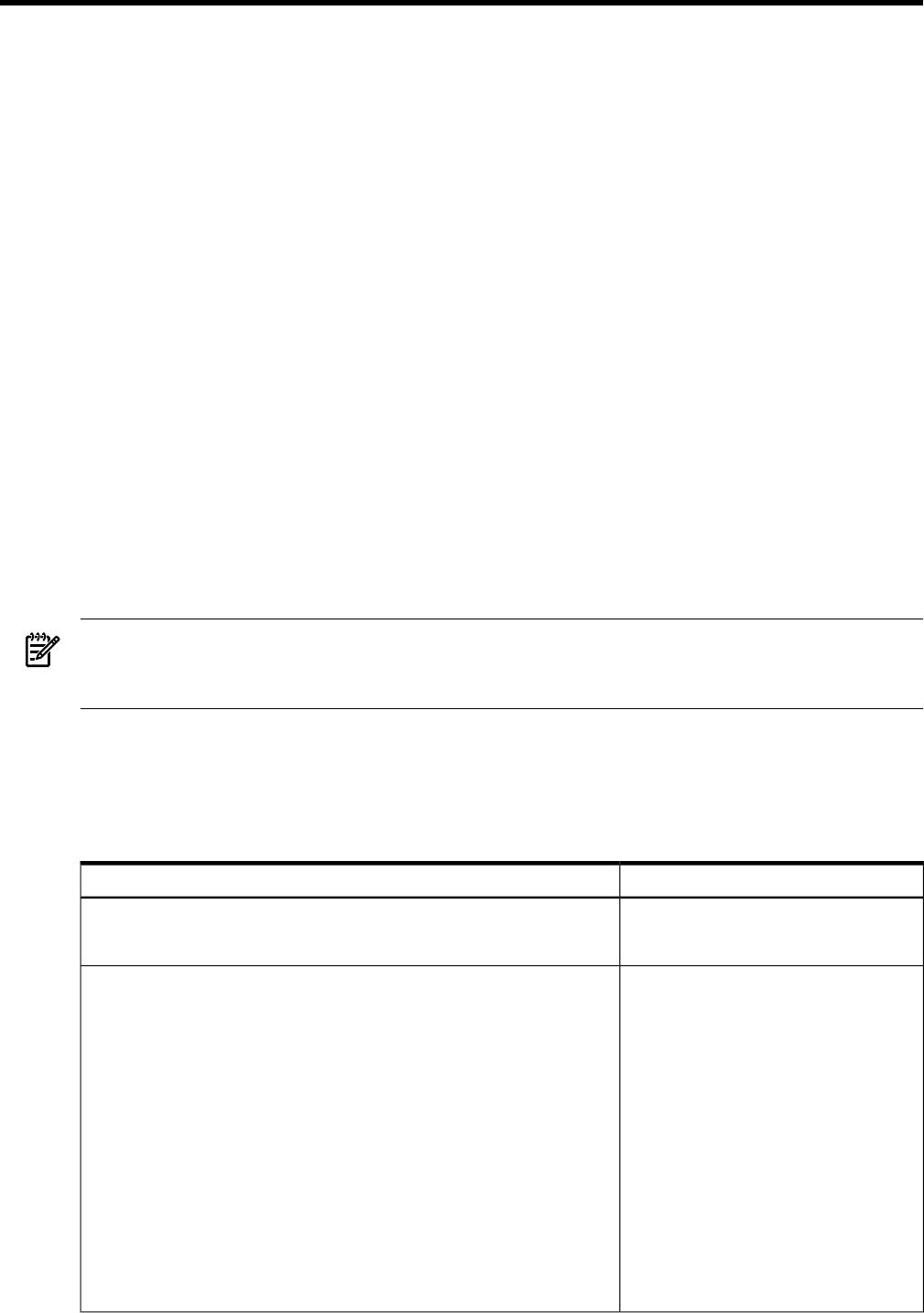LDAP-UX Client Services B.04.15 with Microsoft Windows Active Directory Server Administrator's Guide (edition 8)
Table Of Contents
- LDAP-UX Client Services B.04.15 with Microsoft Windows Active Directory Administrator's Guide
- Table of Contents
- Preface
- 1 Introduction
- 2 Installing LDAP-UX Client Services
- Before You Begin
- Summary of Installing and Configuring LDAP-UX Client Services
- Planning Your Installation
- Installing LDAP-UX Client Services on a Client
- Configuring Active Directory for HP-UX Integration
- Step 1: Install Active Directory
- Step 2: Install SFU 2.0, 3.0 or 3.5 including Server for NIS
- Step 3: Create a Proxy User
- Step 4: Add an HP-UX Client Machine Account to Active Directory
- Step 5: Use ktpass to Create the Keytab File for the HP-UX client machine
- Step 6: Add POSIX Attributes into the Global Catalog
- Importing Name Service Data into Your Directory
- Configuring LDAP-UX Client Services
- Step 1: Run the Setup Program
- Step 2: Install the PAM Kerberos Product
- Step 3: Configure Your HP-UX Machine to Authenticate Using PAM Kerberos
- Step 4: Configure the Name Service Switch (NSS)
- Step 5: Configure the PAM Authorization Service Module (pam_authz)
- Step 6: Configure the Disable Login Flag
- Step 7: Verify LDAP-UX Client Services for Single Domain
- Step 8: Configure Subsequent Client Systems
- Configuring the LDAP-UX Client Services with SSL or TLS Support
- Downloading the Profile Periodically
- 3 Active Directory Multiple Domains
- 4 LDAP-UX Client Services with AutoFS Support
- 5 LDAP Printer Configurator Support
- 6 Dynamic Group Support
- 7 Administering LDAP-UX Client Services
- Using the LDAP-UX Client Daemon
- Integrating with Trusted Mode
- SASL GSSAPI Support
- PAM_AUTHZ Login Authorization
- Policy And Access Rules
- How Login Authorization Works
- PAM_AUTHZ Supports Security Policy Enforcement
- Policy File
- Policy Validator
- Dynamic Variable Support
- Constructing an Access Rule in pam_authz.policy
- Static List Access Rule
- Dynamic Variable Access Rule
- Security Policy Enforcement with Secure Shell (SSH) or r-commands
- Adding Additional Domain Controllers
- Adding Users, Groups, and Hosts
- User and Group Management
- Displaying the Proxy User's Distinguished Name
- Verifying the Proxy User
- Creating a New Proxy User
- Displaying the Current Profile
- Creating a New Profile
- Modifying a Profile
- Changing Which Profile a Client is Using
- Creating an /etc/krb5.keytab File
- Considering Performance Impacts
- Client Daemon Performance
- Troubleshooting
- 8 Modifying User Information
- 9 Mozilla LDAP C SDK
- A Configuration Worksheet
- B LDAP-UX Client Services Object Classes
- C Command, Tool, Schema Extension Utility, and Migration Script Reference
- LDAP-UX Client Services Components
- Client Management Tools
- LDAP User and Group Management Tools
- Environment Variables
- Return Value Formats
- Common Return Codes
- The ldapuglist Tool
- The ldapugadd Tool
- The ldapugmod Tool
- The ldapugdel Tool
- The ldapcfinfo Tool
- LDAP Directory Tools
- Schema Extension Utility
- Name Service Migration Scripts
- Unsupported Contributed Tools and Scripts
- D Sample PAM Configuration File
- E Sample /etc/krb5.conf File
- F Sample /etc/pam.conf File for HP-UX 11i v1 Trusted Mode
- G Sample /etc/pam.conf File for HP-UX 11i v2 Trusted Mode
- H Sample PAM Configuration File for Security Policy Enforcement
- Glossary
- Index

9 Mozilla LDAP C SDK
This chapter describes the Mozilla LDAP SDK for C and the SDK file components. This chapter
contains the following sections:
• “Overview” (page 153).
• “The Mozilla LDAP C SDK File Components” (page 153) briefly describes many of files that
comprise the LDAP C SDK.
Overview
The LDAP-UX Client Services provides the Mozilla LDAP C SDK 5.17.1 support. The LDAP C
SDK is a Software Development Kit that contains a set of LDAP Application Programming
Interfaces (API) to allow you to build LDAP-enabled clients. The functionality implemented in
the SDK closely follows the interface outlined in RFC 2251. Using the functionality provided
with the SDK, you can enable your clients to connect to LDAP v3-compliant servers and perform
the LDAP functions.
The API functions provided by the Netscape LDAP C SDK allow you to perform the following
major LDAP operations:
• Search for retrieving a list of entries
• Add new entries to the directory
• Update existing entries
• Delete entries
• Rename entries
NOTE: For the detailed information on how to use the LDAP API functions contained in the
Netscape SDK for C, and how to enable your client applications to connect to the LDAP servers,
refer to Mozilla LDAP C SDK Programmer's Guide at http://www.mozilla.org/directory/csdk-docs/.
The Mozilla LDAP C SDK File Components
Table 7-1 shows the Mozilla LDAP C SDK 5.17.1 file components on the HP-UX 32 or 64 bit PA
machine:
Table 9-1 Mozilla LDAP C SDK File Components on the PA machine
DescriptionFiles
Main LDAP C SDK API libraries that link
to the /opt/ldapux/lib libraries.
/usr/lib/libldap.sl (32-bit)
/usr/lib/pa20_64/libldap.sl (64-bit)
LDAP C SDK dependency libraries./opt/ldapux/lib/libnspr4.sl (32-bit)
/opt/ldapux/lib/libnss3.sl (32-bit)
/opt/ldapux/lib/libsoftokn3.sl (32-bit)
/opt/ldapux/lib/libssl3.sl (32-bit)
/opt/ldapux/lib/libfreebl_hybrid_3.sl (32-bit)
/opt/ldapux/lib/libfreebl_pure32_3.sl (32-bit)
/opt/ldapux/lib/libplc4.sl (32-bit)
/opt/ldapux/lib/pa20_64/libnspr4.sl (64-bit)
/opt/ldapux/lib/pa20_64/libnss3.sl (64-bit)
/opt/ldapux/lib/pa20_64/libplc4.sl (64-bit)
/opt/ldapux/lib/pa20_64/libsoftokn3. sl (64-bit)
/opt/ldapux/lib/pa20_64/libssl3.sl (64-bit )
/opt/ldapux/lib/pa20_64/libplds4.sl (64-bit)
Overview 153










